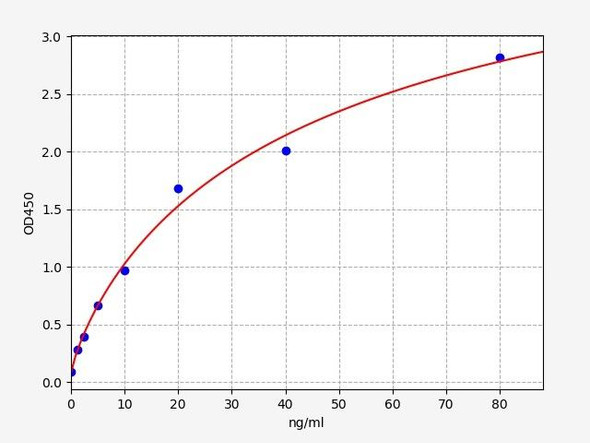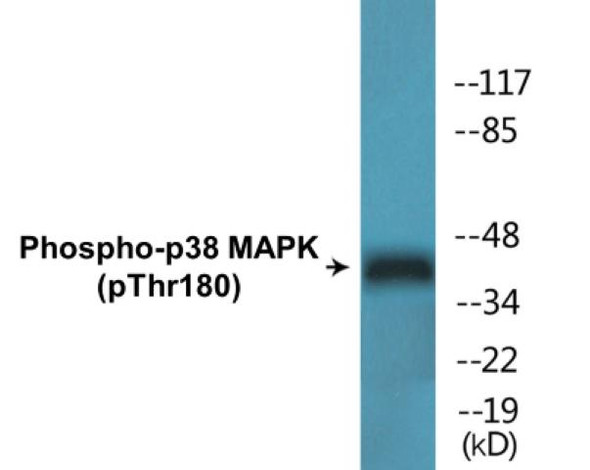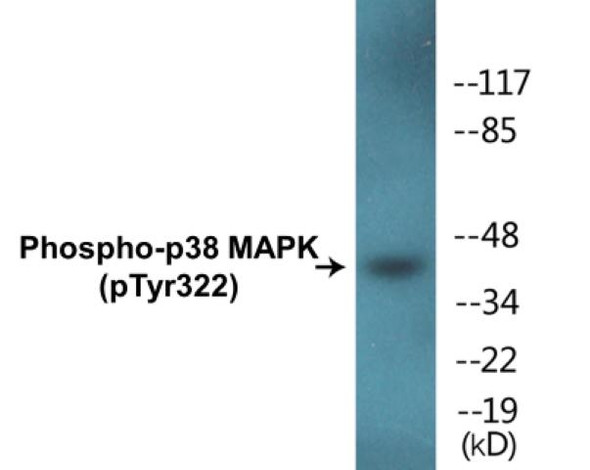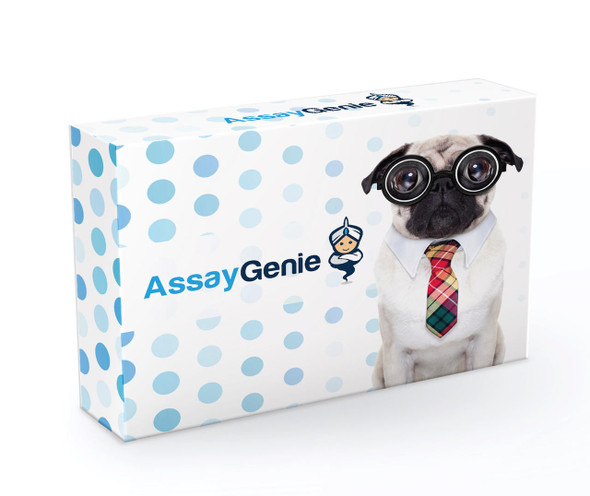Description
Rat MAPK ELISA Kit
The Rat MAPK (Mitogen-Activated Protein Kinase) ELISA Kit is a powerful tool for researchers looking to accurately measure MAPK levels in rat samples such as serum, plasma, and cell culture supernatants. With its high sensitivity and specificity, this kit provides reliable and reproducible results, making it ideal for a variety of research applications.MAPKs are important signaling molecules that play a key role in cell proliferation, differentiation, and survival. Dysregulation of MAPK signaling pathways has been implicated in various diseases, including cancer, inflammatory disorders, and neurological conditions.
By accurately measuring MAPK levels, researchers can gain valuable insights into disease mechanisms and potential therapeutic targets.Overall, the Rat MAPK ELISA Kit is a valuable tool for studying MAPK signaling pathways and their role in disease development, making it a must-have for researchers conducting studies in the field of molecular biology and cell signaling.
| Product Name: | Rat MAPK (P38 Mitogen-Activated Protein Kinase) ELISA Kit |
| Product Code: | RTFI00943 |
| Size: | 96 Assays |
| Target: | Rat MAPK |
| Alias: | MAPK |
| Reactivity: | Rat |
| Detection Method: | Sandwich ELISA, Double Antibody |
| Sensitivity: | 0.75ng/ml |
| Range: | 1.25-80ng/ml |
| Storage: | 4°C for 6 months |
| Note: | For Research Use Only |
| Recovery: | Matrices listed below were spiked with certain level of Rat MAPK and the recovery rates were calculated by comparing the measured value to the expected amount of Rat MAPK in samples. | ||||||||||||||||
| |||||||||||||||||
| Linearity: | The linearity of the kit was assayed by testing samples spiked with appropriate concentration of Rat MAPK and their serial dilutions. The results were demonstrated by the percentage of calculated concentration to the expected. | ||||||||||||||||
| |||||||||||||||||
| Intra-Assay: | CV <8% | ||||||||||||||||
| Inter-Assay: | CV <10% |
| Uniprot: | P63086 |
| UniProt Protein Function: | ERK2: a serine/threonine kinase of the GMGC group that plays a critical role in the regulation of cell growth and differentiation. ERK1 (MAPK3) and ERK2 (MAPK1) play central roles in MAPK cascades and are activated by a wide variety of extracellular signals including growth and neurotrophic factors, cytokines, hormones and neurotransmitters. Depending on the cellular context, MAPK cascades mediate diverse biological functions such as cell growth, adhesion, survival and differentiation through the regulation of transcription, translation, cytoskeletal rearrangements. MAPK cascades also plays a role in initiation and regulation of meiosis, mitosis, and postmitotic functions in differentiated cells by phosphorylating a number of transcription factors. Activation of MAP kinases occurs through phosphorylation of threonine and tyrosine residues at the sequence T*EY* by upstream MAP kinase kinases, MEK1 and -2. Phosphorylation of both the threonine and tyrosine are required for activity. This phosphorylation causes dramatic conformational changes, which enable full activation and interaction of MAPK1/ERK2 with its substrates. |
| UniProt Protein Details: | Protein type:Protein kinase, Ser/Thr (non-receptor); Kinase, protein; Protein kinase, CMGC; EC 2.7.11.24; CMGC group; MAPK family; MAPK/ERK subfamily; ERK subfamily Chromosomal Location of Human Ortholog: 22q11.21 Cellular Component: dendrite cytoplasm; Golgi apparatus; protein complex; focal adhesion; mitochondrion; early endosome; perikaryon; pseudopodium; caveola; cytosol; nucleoplasm; microtubule cytoskeleton; cytoskeleton; axon; late endosome; cytoplasm; microtubule organizing center; nucleus Molecular Function:RNA polymerase subunit kinase activity; MAP kinase activity; protein serine/threonine kinase activity; protein binding; DNA binding; phosphotyrosine binding; mitogen-activated protein kinase kinase kinase binding; transcription factor binding; ATP binding; phosphatase binding Biological Process: nerve growth factor receptor signaling pathway; activation of MAPKK activity; viral reproduction; activation of MAPK activity; positive regulation of transcription, DNA-dependent; response to toxin; stress-activated MAPK cascade; toll-like receptor 3 signaling pathway; sensory perception of pain; protein amino acid phosphorylation; T cell receptor signaling pathway; toll-like receptor 5 signaling pathway; B cell receptor signaling pathway; regulation of transcription factor activity; small GTPase mediated signal transduction; toll-like receptor 4 signaling pathway; platelet activation; fibroblast growth factor receptor signaling pathway; transcription, DNA-dependent; toll-like receptor 2 signaling pathway; regulation of stress-activated MAPK cascade; nuclear translocation of MAPK; organ morphogenesis; response to estrogen stimulus; toll-like receptor 9 signaling pathway; regulation of cytoskeleton organization and biogenesis; axon guidance; positive regulation of translation; apoptosis; regulation of protein stability; chemotaxis; signal transduction; toll-like receptor 10 signaling pathway; synaptic transmission; response to exogenous dsRNA; positive regulation of cell proliferation; lipopolysaccharide-mediated signaling pathway; response to stress; epidermal growth factor receptor signaling pathway; MyD88-independent toll-like receptor signaling pathway; peptidyl-threonine phosphorylation; MAPKKK cascade; mammary gland epithelial cell proliferation; cell cycle; MyD88-dependent toll-like receptor signaling pathway; negative regulation of cell differentiation; peptidyl-serine phosphorylation; cytosine metabolic process; Ras protein signal transduction; insulin receptor signaling pathway; toll-like receptor signaling pathway; innate immune response; blood coagulation; vascular endothelial growth factor receptor signaling pathway; response to DNA damage stimulus; positive regulation of cell migration |
| NCBI Summary: | This gene encodes a member of the MAP kinase family. MAP kinases, also known as extracellular signal-regulated kinases (ERKs), act as an integration point for multiple biochemical signals, and are involved in a wide variety of cellular processes such as proliferation, differentiation, transcription regulation and development. The activation of this kinase requires its phosphorylation by upstream kinases. Upon activation, this kinase translocates to the nucleus of the stimulated cells, where it phosphorylates nuclear targets. One study also suggests that this protein acts as a transcriptional repressor independent of its kinase activity. The encoded protein has been identified as a moonlighting protein based on its ability to perform mechanistically distinct functions. Two alternatively spliced transcript variants encoding the same protein, but differing in the UTRs, have been reported for this gene. [provided by RefSeq, Jan 2014] |
| UniProt Code: | P63086 |
| NCBI GenInfo Identifier: | 66932916 |
| NCBI Gene ID: | 5594 |
| NCBI Accession: | NP_002736.3 |
| UniProt Secondary Accession: | P63086,P63085, P63086, |
| UniProt Related Accession: | P28482 |
| Molecular Weight: | 41kDa |
| NCBI Full Name: | mitogen-activated protein kinase 1 |
| NCBI Synonym Full Names: | mitogen-activated protein kinase 1 |
| NCBI Official Symbol: | MAPK1 |
| NCBI Official Synonym Symbols: | ERK; p38; p40; p41; ERK2; ERT1; ERK-2; MAPK2; PRKM1; PRKM2; P42MAPK; p41mapk; p42-MAPK |
| NCBI Protein Information: | mitogen-activated protein kinase 1 |
| UniProt Protein Name: | Mitogen-activated protein kinase 1 |
| UniProt Synonym Protein Names: | ERT1; Extracellular signal-regulated kinase 2; ERK-2; MAP kinase isoform p42; p42-MAPK; Mitogen-activated protein kinase 2 |
| UniProt Gene Name: | MAPK1 |
| UniProt Entry Name: | MK01_HUMAN |
| Step | Procedure |
| 1. | Set standard, test sample and control (zero) wells on the pre-coated plate respectively, and then, record their positions. It is recommended to measure each standard and sample in duplicate. Wash plate 2 times before adding standard, sample and control (zero) wells! |
| 2. | Aliquot 0.1ml standard solutions into the standard wells. |
| 3. | Add 0.1 ml of Sample / Standard dilution buffer into the control (zero) well. |
| 4. | Add 0.1 ml of properly diluted sample ( Human serum, plasma, tissue homogenates and other biological fluids.) into test sample wells. |
| 5. | Seal the plate with a cover and incubate at 37°C for 90 min. |
| 6. | Remove the cover and discard the plate content, clap the plate on the absorbent filter papers or other absorbent material. Do NOT let the wells completely dry at any time. Wash plate X2. |
| 7. | Add 0.1 ml of Biotin- detection antibody working solution into the above wells (standard, test sample & zero wells). Add the solution at the bottom of each well without touching the side wall. |
| 8. | Seal the plate with a cover and incubate at 37°C for 60 min. |
| 9. | Remove the cover, and wash plate 3 times with Wash buffer. Let wash buffer rest in wells for 1 min between each wash. |
| 10. | Add 0.1 ml of SABC working solution into each well, cover the plate and incubate at 37°C for 30 min. |
| 11. | Remove the cover and wash plate 5 times with Wash buffer, and each time let the wash buffer stay in the wells for 1-2 min. |
| 12. | Add 90 µL of TMB substrate into each well, cover the plate and incubate at 37°C in dark within 10-20 min. (Note: This incubation time is for reference use only, the optimal time should be determined by end user.) And the shades of blue can be seen in the first 3-4 wells (with most concentrated standard solutions), the other wells show no obvious color. |
| 13. | Add 50 µL of Stop solution into each well and mix thoroughly. The color changes into yellow immediately. |
| 14. | Read the O.D. absorbance at 450 nm in a microplate reader immediately after adding the stop solution. |
When carrying out an ELISA assay it is important to prepare your samples in order to achieve the best possible results. Below we have a list of procedures for the preparation of samples for different sample types.
| Sample Type | Protocol |
| Serum: | If using serum separator tubes, allow samples to clot for 30 minutes at room temperature. Centrifuge for 10 minutes at 1,000x g. Collect the serum fraction and assay promptly or aliquot and store the samples at -80°C. Avoid multiple freeze-thaw cycles. If serum separator tubes are not being used, allow samples to clotovernight at 2-8°C. Centrifuge for 10 minutes at 1,000x g. Removeserum and assay promptly or aliquot and store the samples at-80°C. Avoid multiple freeze-thaw cycles. |
| Plasma: | Collect plasma using EDTA or heparin as an anti-coagulant. Centrifuge samples at 4°C for 15 mins at 1000 × g within 30 mins of collection. Collect the plasma fraction and assay promptly or aliquot and store the samples at -80°C. Avoid multiple freeze-thaw cycles.Note: Over haemolysed samples are not suitable for use with this kit. |
| Urine & Cerebrospinal Fluid: | Collect the urine (mid-stream) in a sterile container, centrifuge for 20 mins at 2000-3000 rpm. Remove supernatant and assay immediately. If any precipitation is detected, repeat the centrifugation step. A similar protocol can be used for cerebrospinal fluid. |
| Cell Culture Supernatant: | Collect the cell culture media by pipette, followed by centrifugation at 4°C for 20 mins at 1500 rpm. Collect the clear supernatant and assay immediately. |
| Cell Lysates: | Solubilize cells in lysis buffer and allow to sit on ice for 30 minutes. Centrifuge tubes at 14,000 x g for 5 minutes to remove insoluble material. Aliquot the supernatant into a new tube and discard the remaining whole cell extract. Quantify total protein concentration using a total protein assay. Assay immediately or aliquot and store at ≤ -20°C. |
| Tissue Homogenates: | The preparation of tissue homogenates will vary depending upon tissue type. Rinse tissue with 1X PBS to remove excess blood & homogenizein 20ml of 1X PBS (including protease inhibitors) and store overnight at ≤ -20°C. Two freeze-thaw cycles are required to break the cell membranes. To further disrupt the cell membranes you can sonicate the samples. Centrifuge homogenates for 5 mins at 5000xg. Remove the supernatant and assay immediately or aliquot and store at -20°C or-80°C. |
| Tissue Lysates: | Rinse tissue with PBS, cut into 1-2 mm pieces, and homogenize with a tissue homogenizer in PBS. Add an equal volume of RIPA buffer containing protease inhibitors and lyse tissues at room temperature for 30 minutes with gentle agitation. Centrifuge to remove debris. Quantify total protein concentration using a total protein assay. Assay immediately or aliquot and store at ≤ -20 °C. |
| Breast Milk: | Collect milk samples and centrifuge at 10,000 x g for 60 min at 4°C. Aliquot the supernatant and assay. For long term use, store samples at -80°C. Minimize freeze/thaw cycles. |
| El-Masry et al. | Potential Antitumor Activity of Combined Lycopene and Sorafenib against Solid Ehrlich Carcinoma via Targeting Autophagy and Apoptosis and Suppressing Proliferation | Pharmaceuticals 2024 | PubMed ID: 38675487 |











